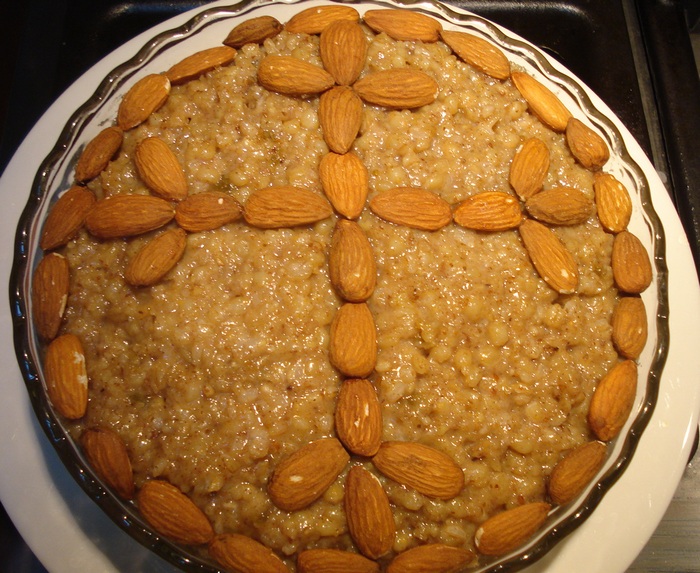
Slava – Patron Saint of the Family
THE SERBIAN SLAVA
Most non-Orthodox Christians, with very few exceptions, celebrate the day of their birth in a non-religions, non-liturgical manner, usually placing it second in importance to their Christmas and, often, higher than their Easter. Orthodox Christians seldom give their birth date more than a passing notice. For the Orthodox, the “personal feast day” of the year is not the date of birth, but rather the feast of God’s Saint after which one is named. This day is called the “name day”, the Imeneny of the Russians, and it is kept in one form or another throughout the Holy Orthodox Christian Church as a feast of deep spiritual meaning.
Serbs have a very special variation of this wonderful tradition. With them, the name day is not . an individual event, but rather a family affair. The feast is called, in Serbian, Slava (Thanksgiving or Glory-giving) and is kept on the feast day of the patron Saint of the entire family. The special spiritual depth of the Slava can only be understood when one realizes that the family celebrates it on the feast day of the Saint which has been the special patron of that family for centuries – ever since the family became Christian. For generations, the patron Saint’s day has been a special uniting force in the family, bringing it together to give glory and thanks.
http://en.wikipedia.org/wiki/Slava
On the day of the Slava, the home becomes “a church in miniature and the family becomes the congregation, reminding us that the Church is a family magnified”. It is the tradition for all members of the family to gather, usually at the home of the eldest living member of the family, to commemorate the patron Saint, to glorify God and to pray for all members of the family, both the living and the reposed. This is perhaps the most beautiful aspect of the Slava: that it celebrates the unity of Christ’s Church both on earth and in heaven. Slava is a sort of spiritual family reunion. Those who are not present in fact are present in spirit; not only living family members who are unable to he present, but also the forefathers of the family.
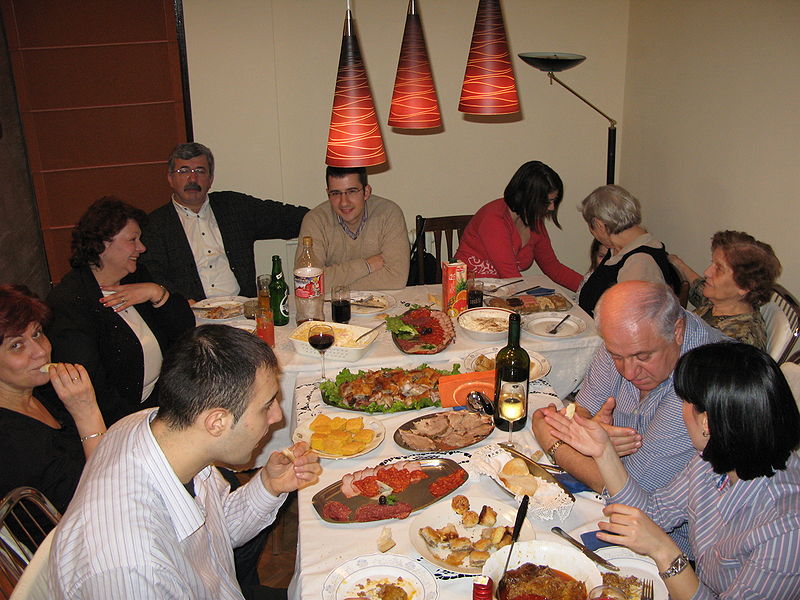
Slava is a religious celebration and this is epitomized by the slavski kolač bread – a special version of the Paschal Kolach which is baked for the occasion and which bears the family’s prosphora seal with the sign of the Cross and the anagram for “Jesus Christ is our victory”.Slavski kolač also bears representations of the dove of peace and of the first-fruits of the harvest.
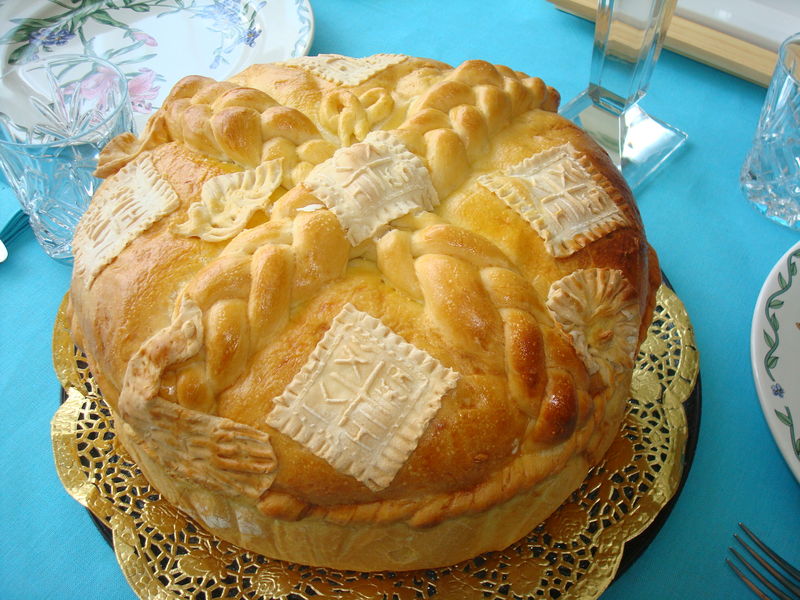
When slavski kolač is placed on the table, a bowl of koljivo is placed next to it.
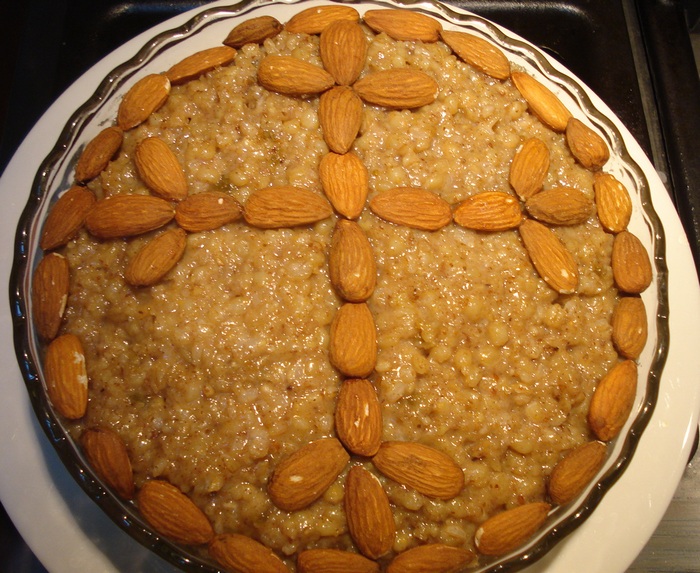
Koljivo is made of boiled wheat mixed with honey and spices. The wheat symbolizes the Resurrection of Christ and, by that, the hope of resurrection vouchsafed to all who dwell within His Holy Church. The koljivo, consisting of wheat gathered up and set apart for the feast, also symbolizes the oneness of all true Orthodox Christians everywhere, gathered together and set apart from the rest of the world.
http://easterneuropeancuisine.blogspot.com/2011/05/zito-koljivo-for-parastos-slavsko-zito.html
Often, an ikon of the family patron saint is placed on the table next to the slavski kolač and the koljivo. The local priest is called to come and bless the home and all those present, offering prayers for the health and well-being of those unable to be present and for the peaceful repose of the forefathers of the family. The highlight of the feast is the service of the Thanksgiving Prayer moleban which is served by the priest before the ikon of the family patron saint.
http://www.holycross-hermitage.com/pages/Orthodox_Life/serb_slava.htm
***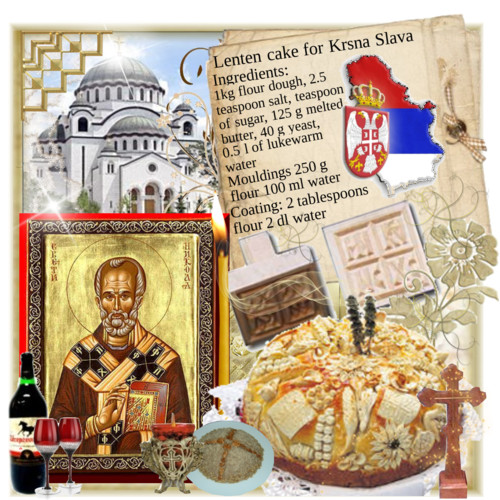
http://serbiathroughamericaneyes.wordpress.com/2012/02/06/tip-7-you-must-experience-a-slava/
***
Slava – patron saint of the family was vigorously observed by the early XX century immigrants of Serbian origin :
” St. Nicholas and the Darr Mining Disaster, December 19, 1907
On Dec. 20, 1907, it made the front page of the New York Times, and the headlines of the Pittsburgh Press (St. Nicholas Feast Saves the Russians) the Pittsburgh Gazette Times (Majority of Victims Americans-Foreign Workers Lay Off to Go to Church and Escape Death) and the Pittsburgh Dispatch. A mining disaster at the Darr Mine in Van Meter, in the south-western corner of Pennsylvania occurred, killing at least 239 English speaking miners, but the toll could have been much higher, closer to 500! Still, it remains the fourth worst coal mining diaster in U.S. history as everyone inside the mine was killed.
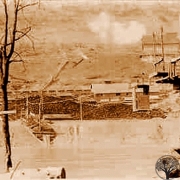
( photo Darr Mine , Virtual Museum of Coal Mining in Western Pennsylvania))
Some 250 faithful *Carpatho-Russian* immigrant coal miners (we’re sure there were Serbs & other Orthodox Slavs) had taken an unpaid day off work to celebrate St. Nicholas’ Day on December 19. He has been the Patron Saint for Slavs for centuries, and thanks to his intercession, men and boys (some only as old as 10 years old!) had survived to become parents and grandparents.
http://patheoldminer.rootsweb.ancestry.com/darr4.html
“Even the greedy coal mine owners, who otherwise had virtually complete control of their miners with threats of dismissal, knew that they could not force *Carpatho-Russians* to work on 19th December, St. Nicholas Day.”
The Centenary Account says that life was very hard for the *Carpatho-Russian* miners, who had to work like animals in the bowels of the earth, exploited by the anglo-American businessmen and coal barons, having to work seven days a week.
“The 1907 miracle in Pennsylvania, which took place according to the Orthodox calendar date of St. Nicholas Day, only served to hearten the exploited *Carpatho-Russian* immigrants, comfirming them in their choice of Faith and encouraging others to do likewise in later years.”
On Dec. 19, 2007, an Akatist was celebrated at the St. Nicholas Orthodox Church at Jacobs Creek, close by where “the Miracle of St. Nicholas of the Darr Mine” occurred. A new troparion and kontakion had been composed for the occasion and the new content, describing the miracle of the saving of the coal miners, was added to the service.“
http://www.babamim.com/slava
***
SLAVA – PATRON SAINT OF THE FAMILY AND RESEARCH OF SERBIAN ANCESTRY
– the descendats of the same ancestral line that you are researching will today in most cases be celebrating the same patron saint day that the family celebrated in seceond half of the XIX century .Most of the surnames among ethnic Serbs are patronymic – formed based on the first name of the clan or family founder. This formation pattern means that same surname like VUKOVIĆ will be carried by completely unrelated people who all had ancestor named VUK. One of the ways to distinguish which branches of the same surname are related to your family and come from joined previous origin is the patron saint – slava that the family celebrates.

( VUKOVIĆ family in Slavonia, Croatia 1898. that celebrated ten different patron saints according to the Serbian Orthodox Church census)
-once you have researched your family in their place of origin and gone through the vital records, you will want to learn about their earlier origin – because of the Ottoman rule ethnic Serbian families have been migrating back and forth across former Yugoslavia and the region since the XIV century. This can be an adventurous and exhausting line of research – families that had to flee the Ottoman persecution often changed both the surname and the patron saint to cover their tracks. On the other hand, you may find that when it comes to patron saint, that your family history is quite *boring* and still it still celebrates slava of their ancestral clan of origin – here is a short history of one such clan and the patron saint it celebrates:
( *Clan* is defined as ” a general term referring to what are known as plemena (племена, tribes) and bratstva (братства, clan/brotherhood), traditional geo-political units that now richly attest social anthropology and family history (geneaology). The descendants of the clans are divided by regional and lately, national affiliation. It has traditionally been viewed as an ethnic Serb tradition.)
http://en.wikipedia.org/w/index.php?title=Serb_clans&printable=yes
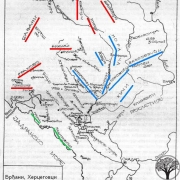
(map of the Highland clans, Hercegovina clans and Coastal clans)
DROBNJAK CLAN
The surname Drobnjak (“Bran Drobnjak”) is first recorded in 1354, and as a clan (pl. Drobnjaci) in 1390. Drobnjak had a semi-autonomy and preserved its old tribal organization, which was predicated on democratic and universal suffrage. At the head of the tribe was a hereditary knez, and the head of the army commander, who was elected to the tribal Parliament, and confirmed by the Vizier in Travnik The Parliament was chaired by the knez, who had right to choose all chiefs, who were all carrying weapons. Decisions had to be unanimous.
Families belonging to the Drobnjak clan are found in many historical documents in the Dubrovnik city archives.

( transcript from the merchant book of records of Živan Pripčinović, Dubrovnik archive, XV century )

(DROBNJAK clan ancestral area of origin, Crno Jezero , Montenegro and the mountain Durmitor)
Around. 1470th Drobnjak territory fell into the hands of the Ottomans. From that moment on begin the migrations and the era of the slavery and the struggle for freedom .
On the religious holiday of Đurđevdan (Saint George), 23rd of April 1604 ( 6th of May), Drobnjaci defeated the Ottomans, and all Drobnjak families symbolically became *blood brothers* and adopted Đurđevdan as their patron saint and most important feast day.
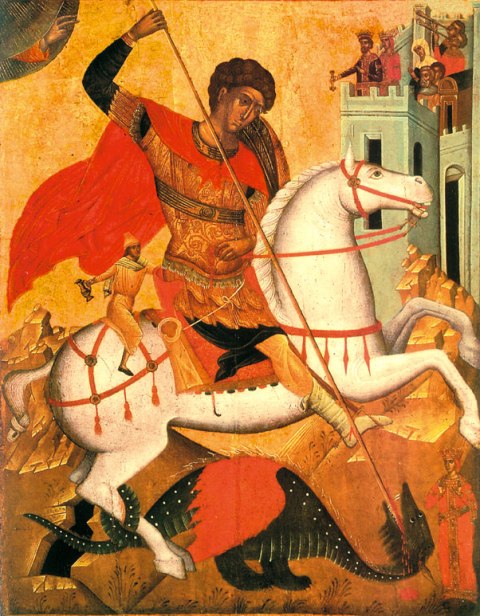
( icon of St. George killing the dragon )
http://en.wikipedia.org/wiki/Drobnjaci
http://www.savniknadlanu.net/english/home/istorija/istorija.html
© Rodoslovlje Serbian Genealogy Society, 2012.